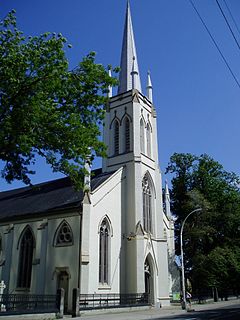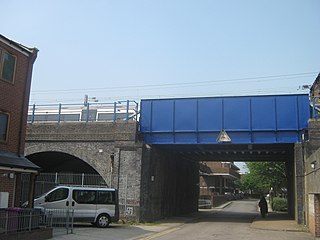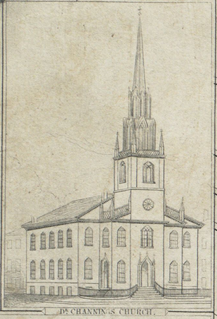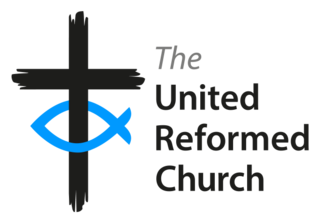
Congregational churches are Protestant churches in the Reformed tradition practicing congregationalist church governance, in which each congregation independently and autonomously runs its own affairs.

Bethnal Green was a civil parish and a metropolitan borough in the East End of London, England.

The Westminster Assembly of Divines was a council of divines (theologians) and members of the English Parliament appointed from 1643 to 1653 to restructure the Church of England. Several Scots also attended, and the Assembly's work was adopted by the Church of Scotland. As many as 121 ministers were called to the Assembly, with nineteen others added later to replace those who did not attend or could no longer attend. It produced a new Form of Church Government, a Confession of Faith or statement of belief, two catechisms or manuals for religious instruction, and a liturgical manual, the Directory for Public Worship, for the Churches of England and Scotland. The Confession and catechisms were adopted as doctrinal standards in the Church of Scotland and other Presbyterian churches, where they remain normative. Amended versions of the Confession were also adopted in Congregational and Baptist churches in England and New England in the seventeenth and eighteenth centuries. The Confession became influential throughout the English-speaking world, but especially in American Protestant theology.

St. Matthew's United Church is a United Church of Canada church in downtown Halifax, Nova Scotia. The church was founded at the same time as the original colony in 1749 as a home for the various groups of dissenting Protestants who were from New England and who did not follow the Church of England. It originally met Sunday afternoons in St. Paul's Church, the Church of England building completed in 1750. The church got its own home in 1754 when a church was constructed at Hollis and Prince Streets. This building was destroyed by fire in 1857, and a new church was built at the current location at 1479 Barrington Street, land parcelled off of the Black-Binney House estate by Bishop Hibbert Binney. The church used the Old Burying Ground.

St. Mary Aldermanbury was a church in the City of London first mentioned in 1181 and destroyed by the Great Fire of London in 1666. Rebuilt in Portland stone by Christopher Wren, it was again gutted by the Blitz in 1940, leaving only the walls standing. These stones were transported to Fulton, Missouri in 1966, by the residents of that town, and rebuilt in the grounds of Westminster College as a memorial to Winston Churchill. Churchill had made his Sinews of Peace, "Iron Curtain" speech in the Westminster College Gymnasium in 1946.

St Paul's Church, Shadwell, is a Grade II* listed Church of England church, located between The Highway and Shadwell Basin, on the edge of Wapping, in the East End of London, England. The church has had varying fortunes over many centuries, and is now very active, having been supported recently by Holy Trinity Brompton Church.

Stepney Causeway is a street in Shadwell, in the East End of London. It runs north-south between the A13 road and the B126 Cable Street. It is crossed by a railway bridge carrying the Docklands Light Railway and c2c line out of Fenchurch Street railway station. The street is particularly associated with Thomas John Barnardo, who opened his first shelter for homeless children at No 18.

St John at Hackney is a Grade II* listed Anglican Church in the heart of the London Borough of Hackney with a large capacity of around 2,000. It was built in 1792 to replace Hackney's medieval parish church, of which St Augustine's Tower remains, at the edge of its churchyard. The church faces north towards Clapton Square, with the nearby Sutton House and Hackney Central station also accessible from the churchyard to the east and south, respectively.

The Old School–New School Controversy was a schism of the Presbyterian Church in the United States of America which took place in 1837 and lasted for over 20 years. The Old School, led by Charles Hodge of Princeton Theological Seminary, was much more conservative theologically and was not supportive of revivalism. It called for traditional Calvinist orthodoxy as outlined in the Westminster standards. The New School derived from the reconstructions of Calvinism by New England Congregationalist theologians Jonathan Edwards, Samuel Hopkins and Joseph Bellamy and wholly embraced revivalism. Though there was much diversity among them, the Edwardsian Calvinists commonly rejected what they called "Old Calvinism" in light of their understandings of God, the human person and the Bible.
St Mary Magdalen, Milk Street, was a parish church in the City of London, England. It was destroyed in the Great Fire of London in 1666 and not rebuilt.

Clerkenwell Priory was a priory of the Monastic Order of the Knights Hospitallers of St John of Jerusalem, in Clerkenwell, London. Run according to the Augustinian rule, it was the residence of the Hospitallers' Grand Prior in England, and was thus their English headquarters. Its great landholding near London until Protestant monarch Edward VI of England was in the former north of Marylebone: St John's Wood which it had farmed out on agricultural tenancies as a source of produce and income.

The Federal Street Church was a congregational unitarian church in Boston, Massachusetts. Organized in 1727, the originally presbyterian congregation changed in 1786 to "Congregationalism", then adopted the liberal theology of its fifth Senior Minister, William Ellery Channing, (1780–1842). For most of the 18th century the church was known as the Long Lane Meeting-House. In 1788, state leaders met in the relatively spacious building to determine Massachusetts' ratification of the United States Constitution. Thereafter the church renamed itself the Federal Street Church in honor of the event. In 1803, it called William Ellery Channing, (1780–1842), as its minister who defined "Unitarian Christianity" and launched the Unitarian movement, making the Federal Street Church one of the first to define itself as Unitarian.

James Peirce (1674?–1726) was an English dissenting minister, the catalyst for the Salter's Hall controversy.

The Atlantis Bookshop is an esoteric bookshop in Museum Street, London. Established by Michael Houghton in 1922, it is currently owned and run by Bali Beskin and her mother Geraldine.
The Old Jewry Meeting-house was a meeting-house for an English Presbyterian congregation, built around 1701, in the Old Jewry in the City of London. Its first minister was John Shower. In 1808 new premises were built in Jewin Street.

Trinity Church Square, formerly known as Trinity Square, is a garden square in Newington in the London Borough of Southwark.
The National Hall, Holborn was a building in High Holborn, London, owned in the 1840s by the National Association for Promoting the Political and Social Improvement of the People. The lease of 242A High Holborn was taken by the National Association in January 1842, for the "Hall of the National Association", which was fitted out in the second half of 1842.

The Baptist College, Stepney, was opened in Stepney in the East End of London in 1810 by the Particular Baptists. Its buildings included rooms for tutors and students, a refectory, a library and a chapel. The college relocated to larger premises at Holford House in 1856 and became Regent's Park College.





















